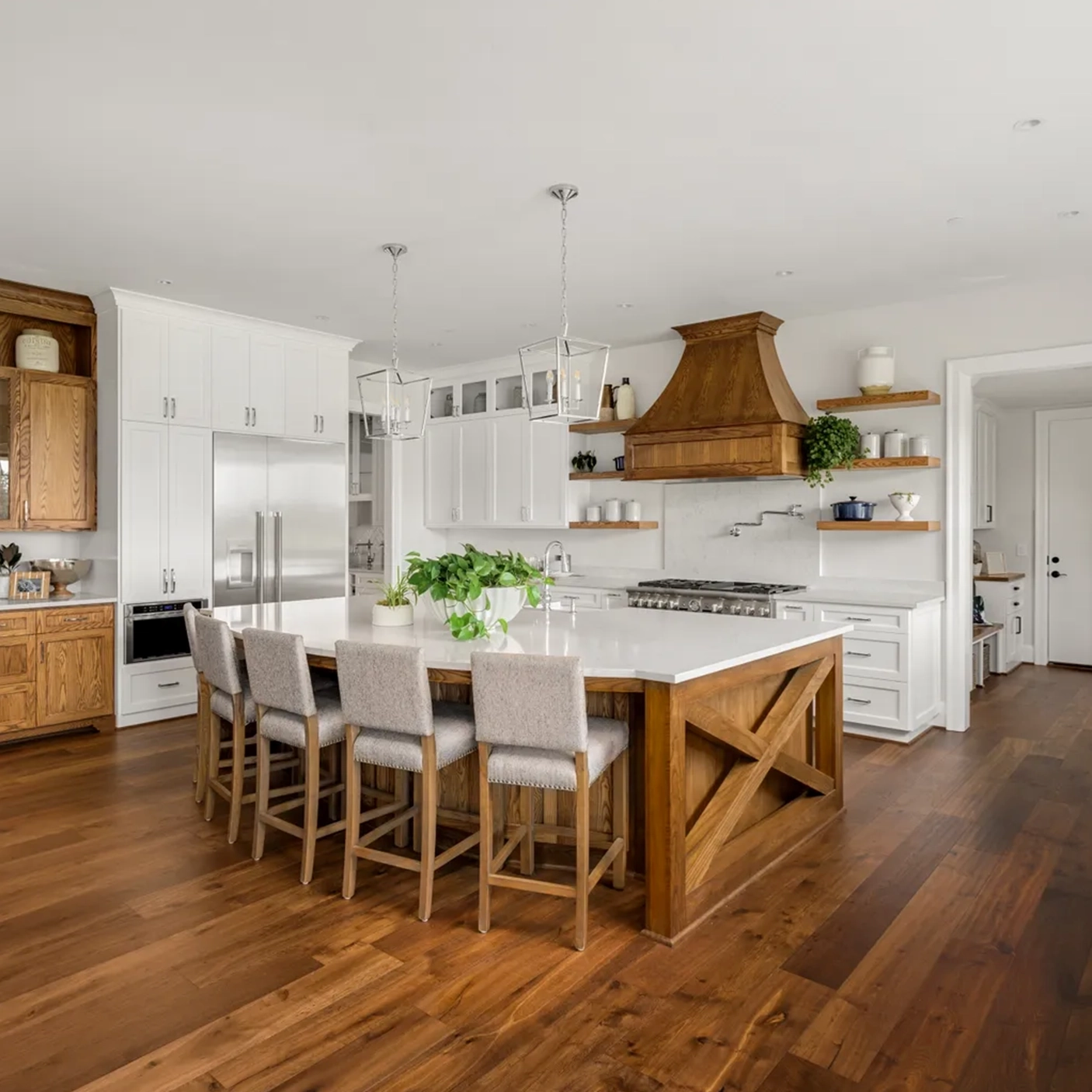Solid hardwood flooring is made from a single piece of natural wood, typically 3/4-inch thick, and offers durability, timeless beauty, and the ability to be refinished multiple times over its lifespan but it is more susceptible to changes in humidity and temperature, which can cause it to expand or contract. It is available in a variety of wood species, such as oak, maple, hickory, walnut, and cherry, each with unique grain patterns and colors. Solid hardwood comes in various widths, typically ranging from 2 1/4 to 5 inches, and lengths that can vary from 12 to 84 inches or more. Solid hardwood offers convenience with a factory-applied finish which comes in a variety of pre-finished options with different gloss levels (matte, satin, semi-gloss, high-gloss), or unfinished wood, which requires on-site finishing., while unfinished hardwood allows for on-site customization of color and finish. While solid hardwood is durable and adds natural warmth to any space, it can be sensitive to moisture and humidity changes, making it less suitable for high-moisture areas like basements or bathrooms.However, with proper care and maintenance, solid hardwood can last for decades.
The grading of Solid hardwood refers to the appearance of the wood, based on factors like color variation, grain patterns, and natural imperfections. Common grades include Select and Better Grade or Clear grade, which features minimal imperfections and offers a uniform, pristine look; Select Grade, with slight imperfections like small knots and subtle color variations; Chracter Grade, which showcases more pronounced natural characteristics such as larger knots and color changes, providing a rustic look; and Rustic or Cabin Grade, which has the most visible imperfections, including large knots and cracks, for a more weathered, natural aesthetic. The choice of grade depends on the desired style, from refined to rustic.








































